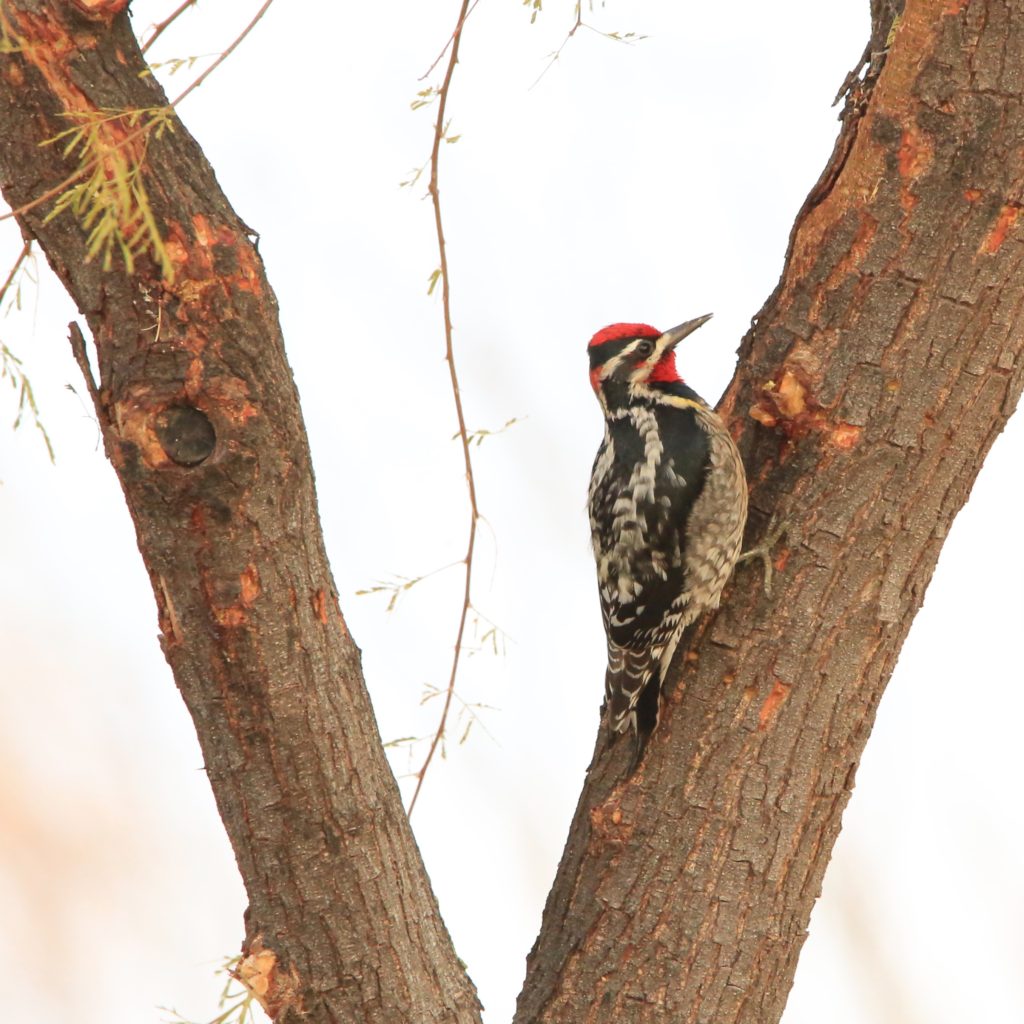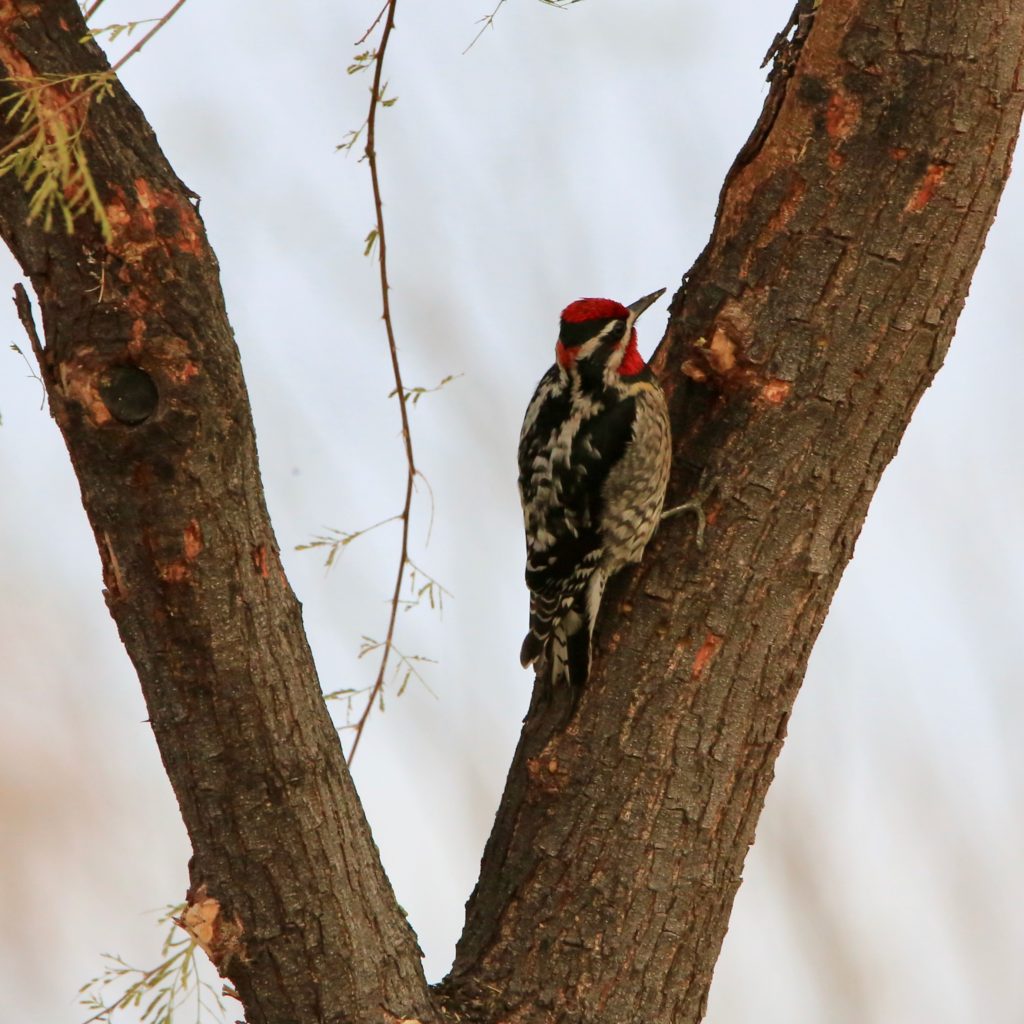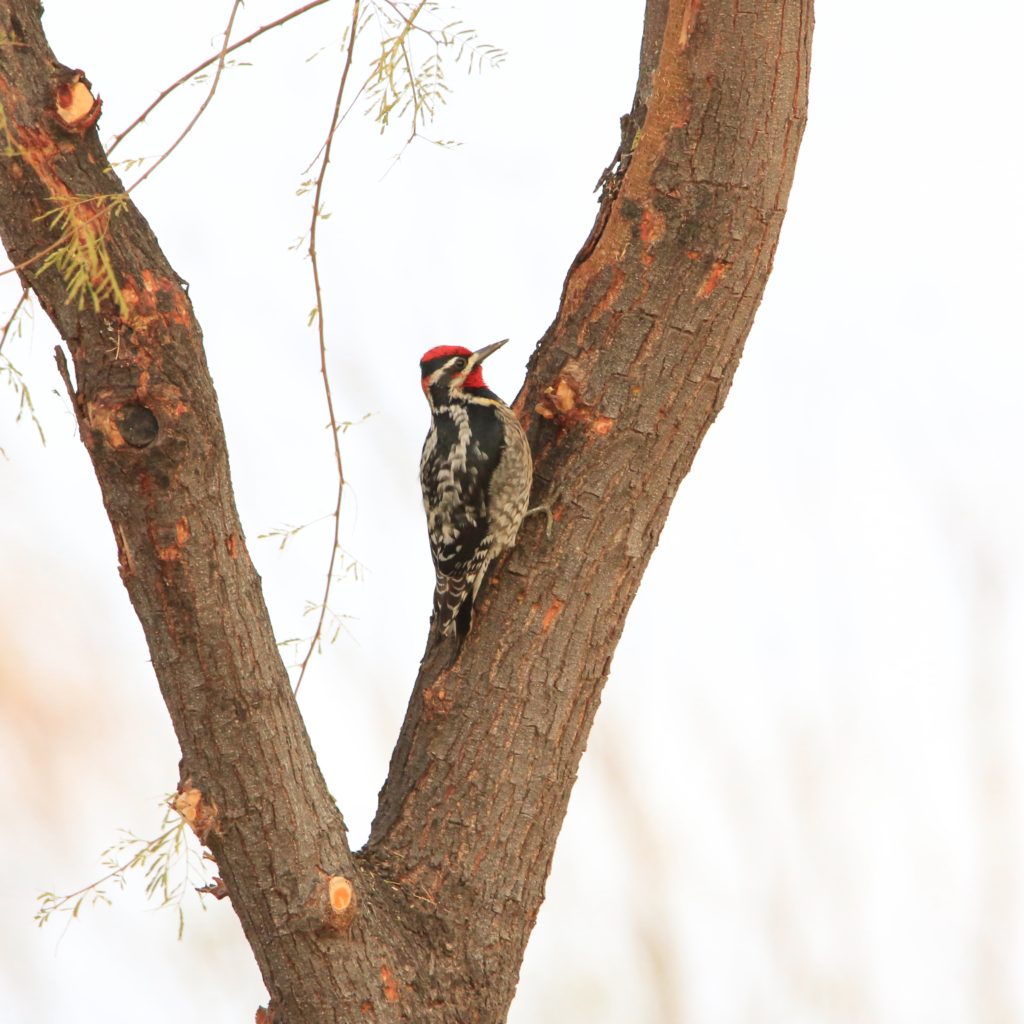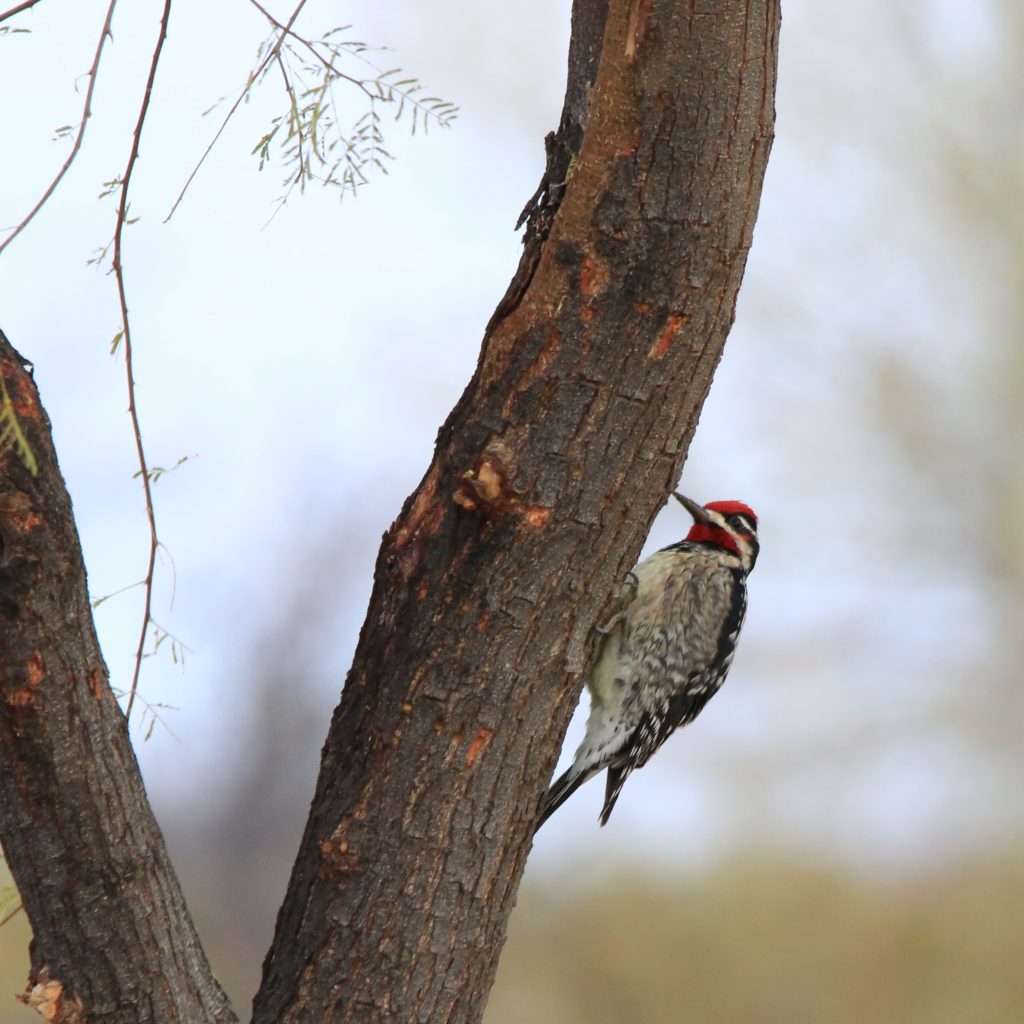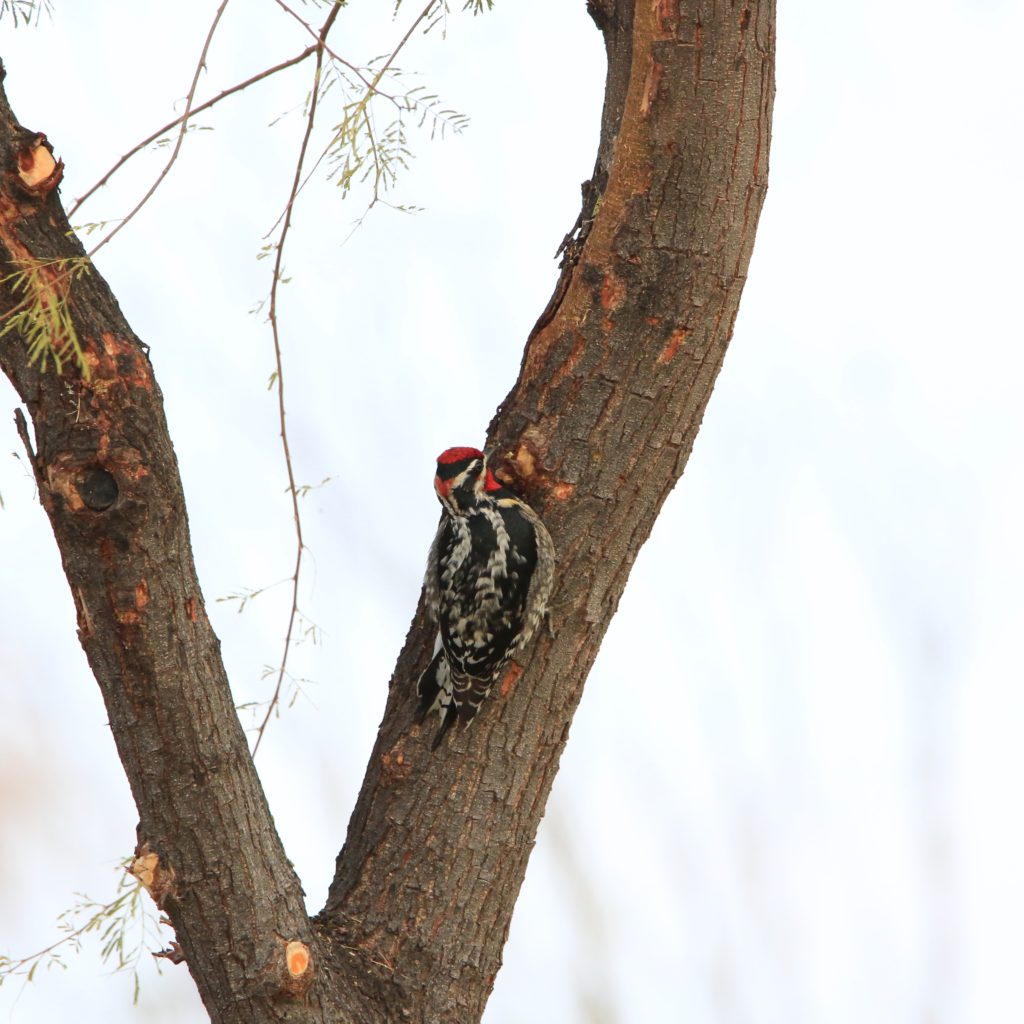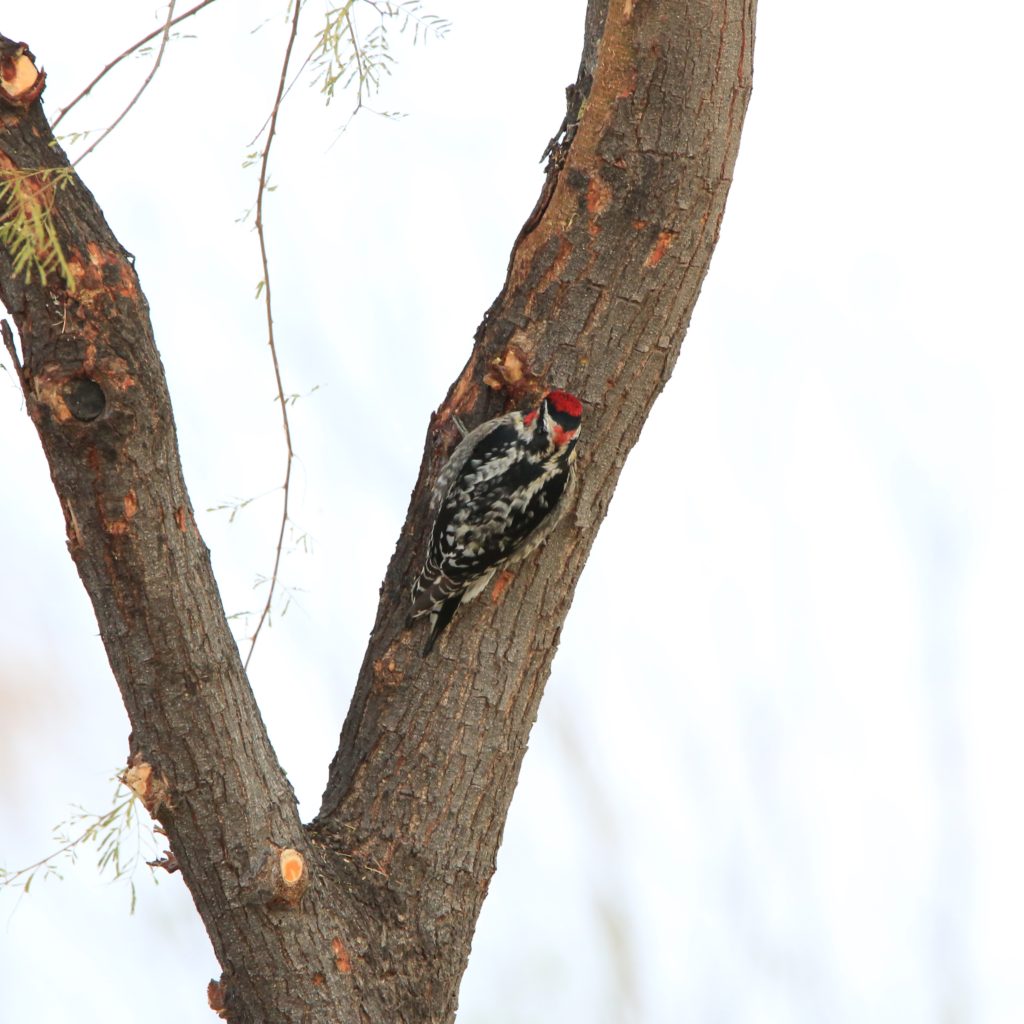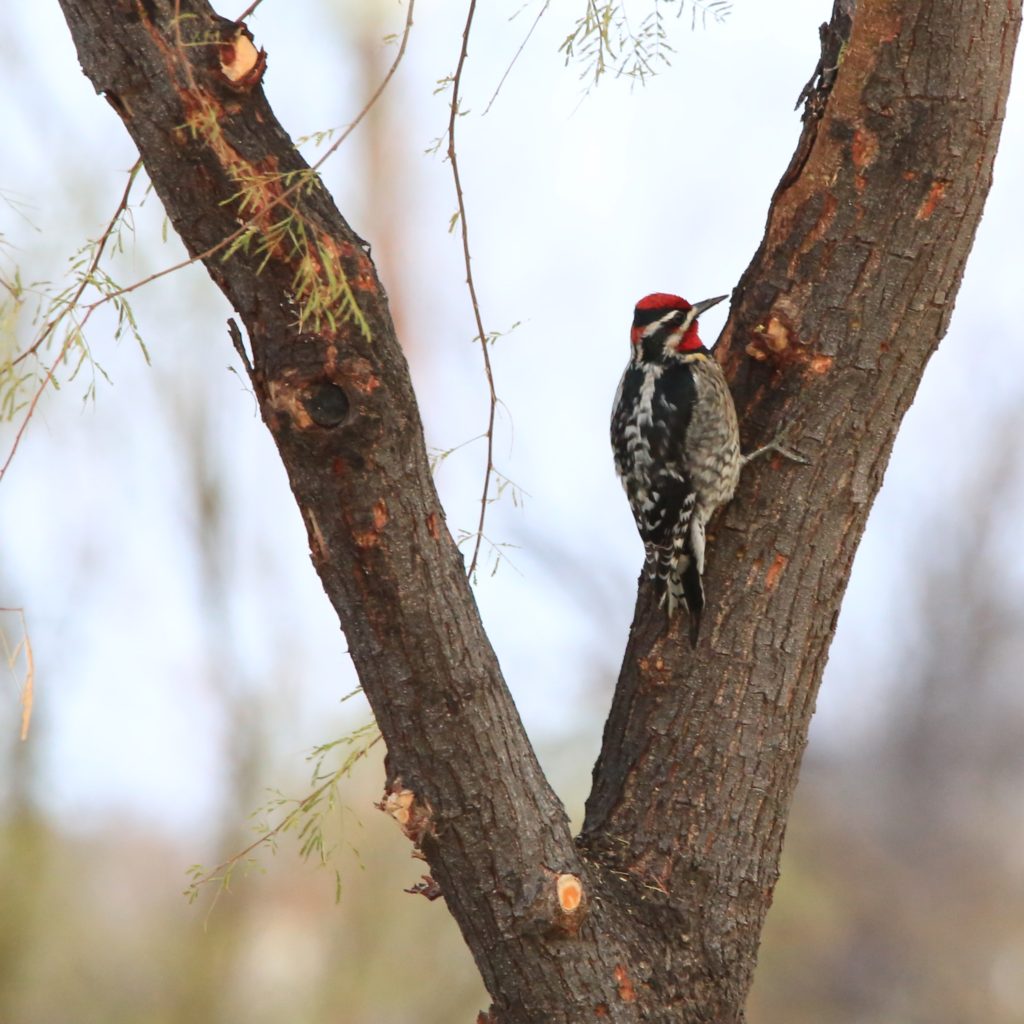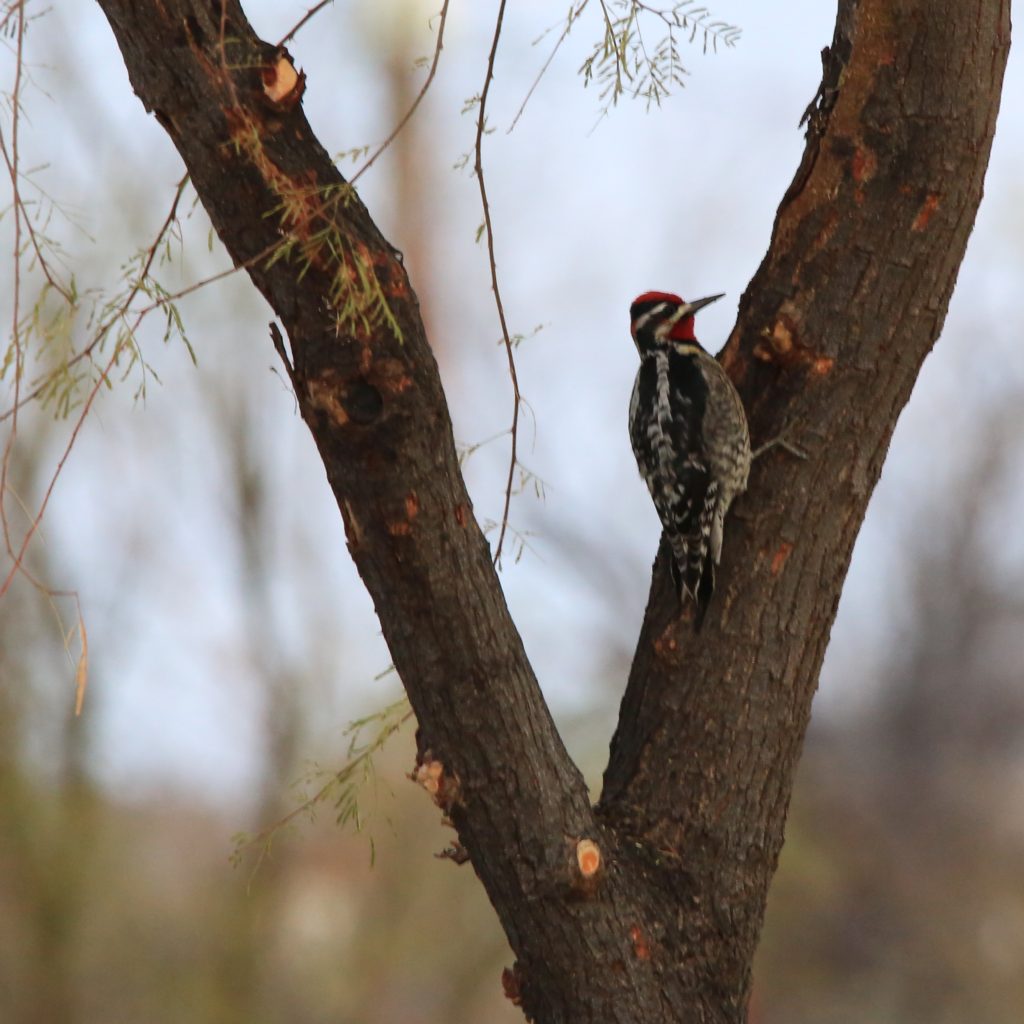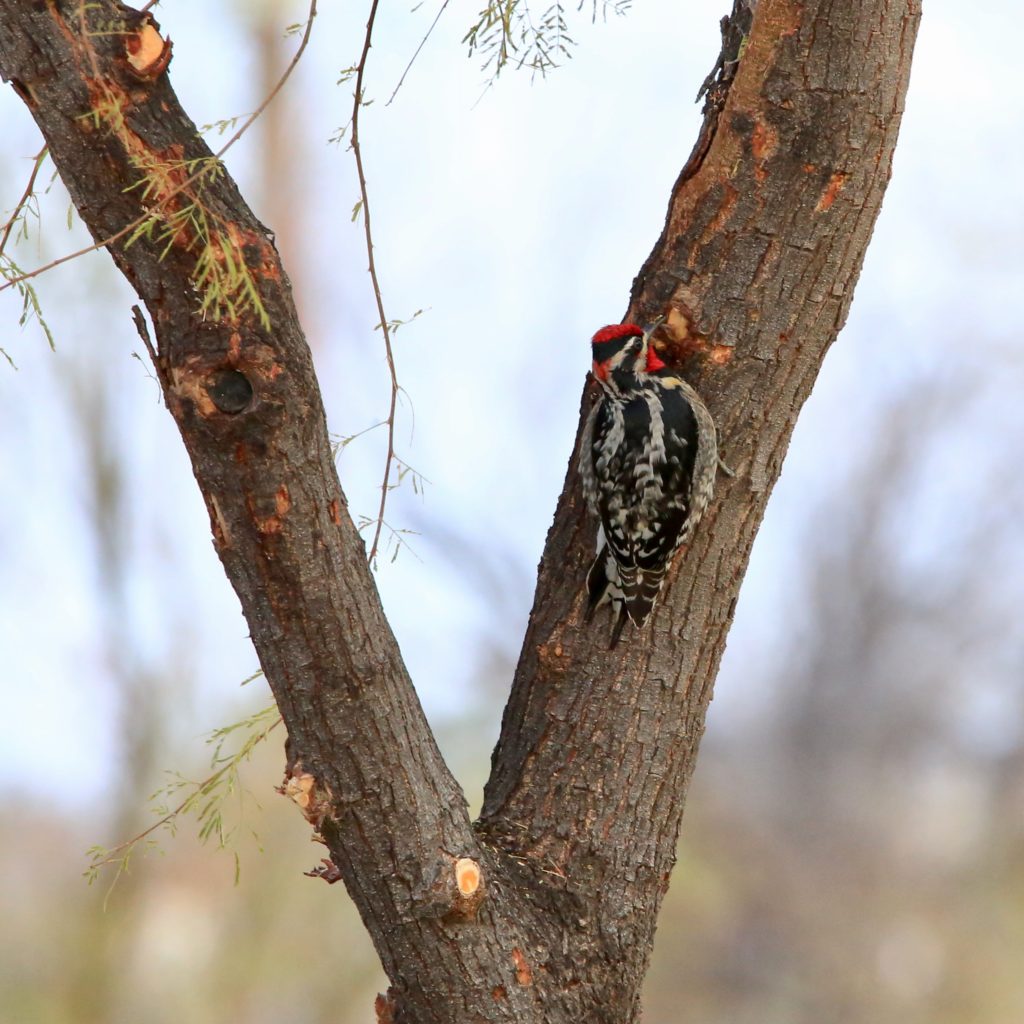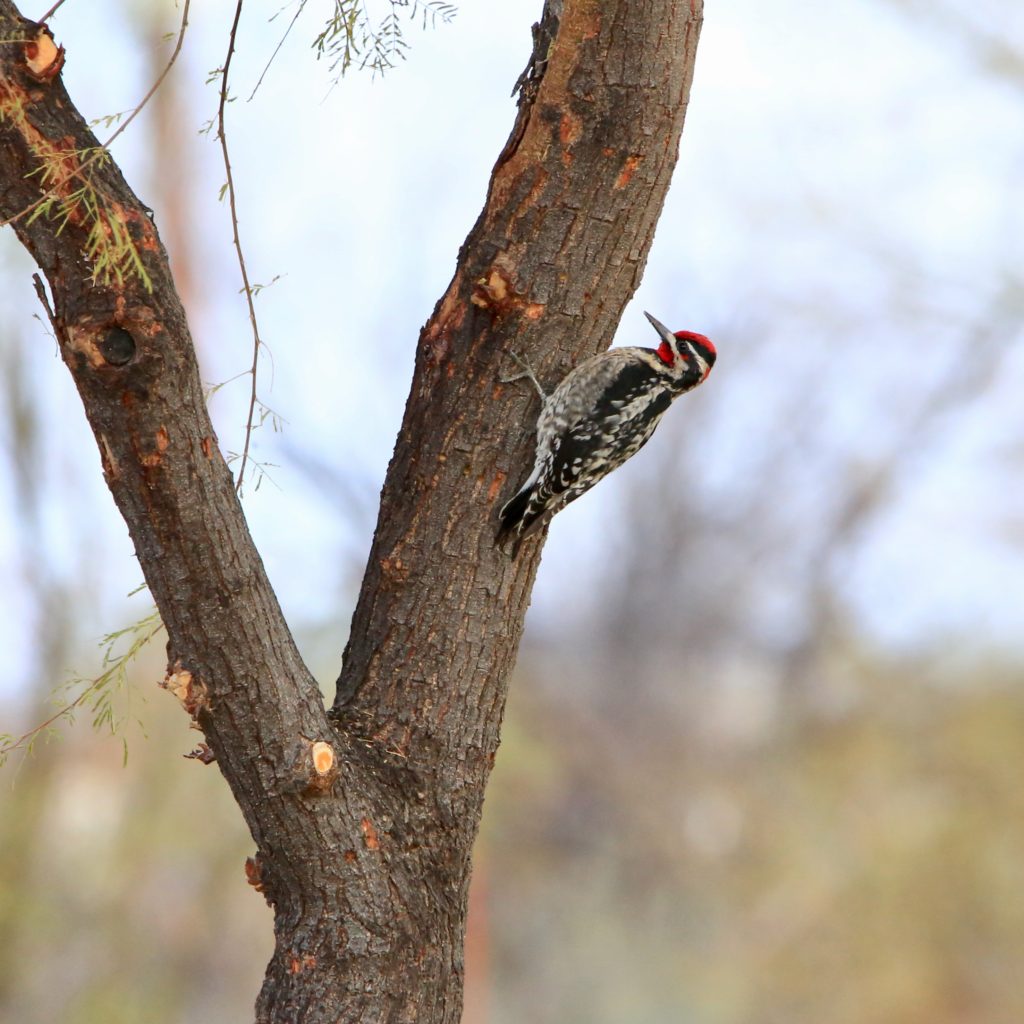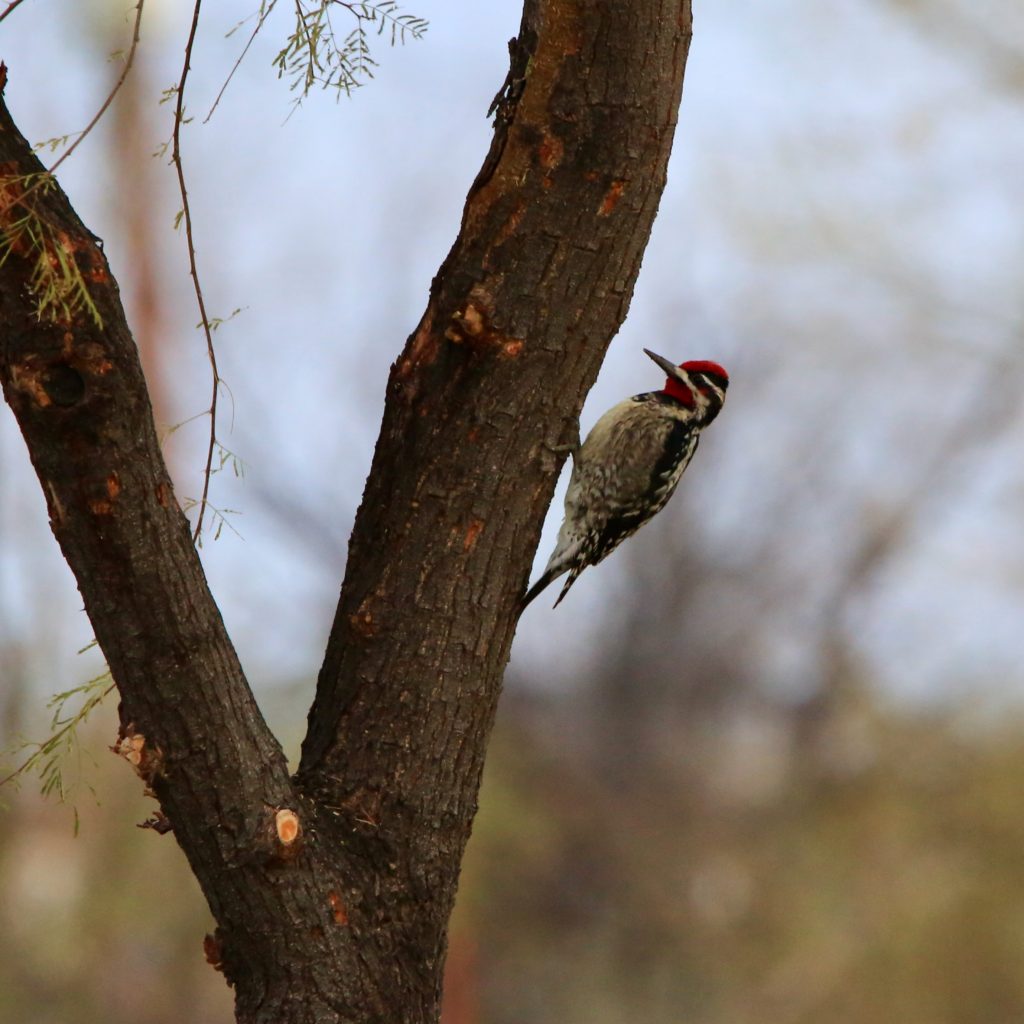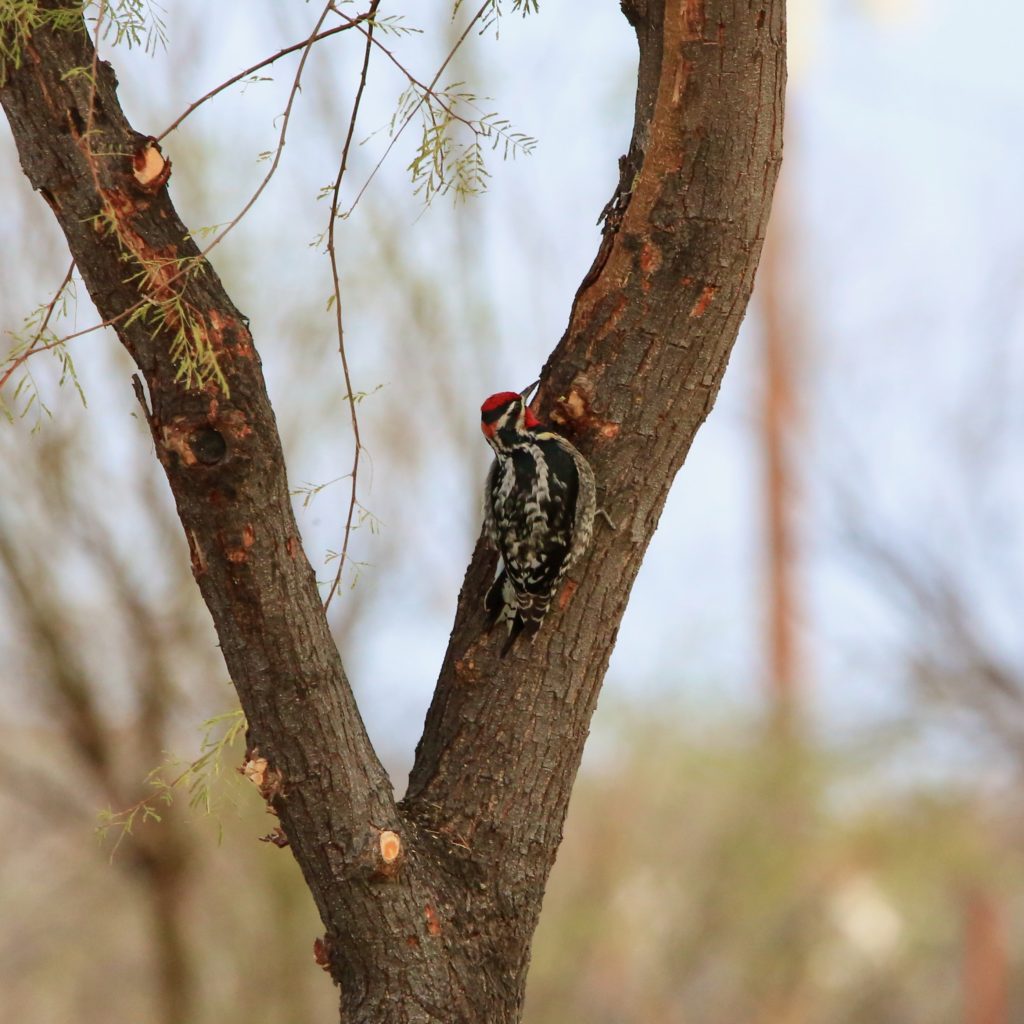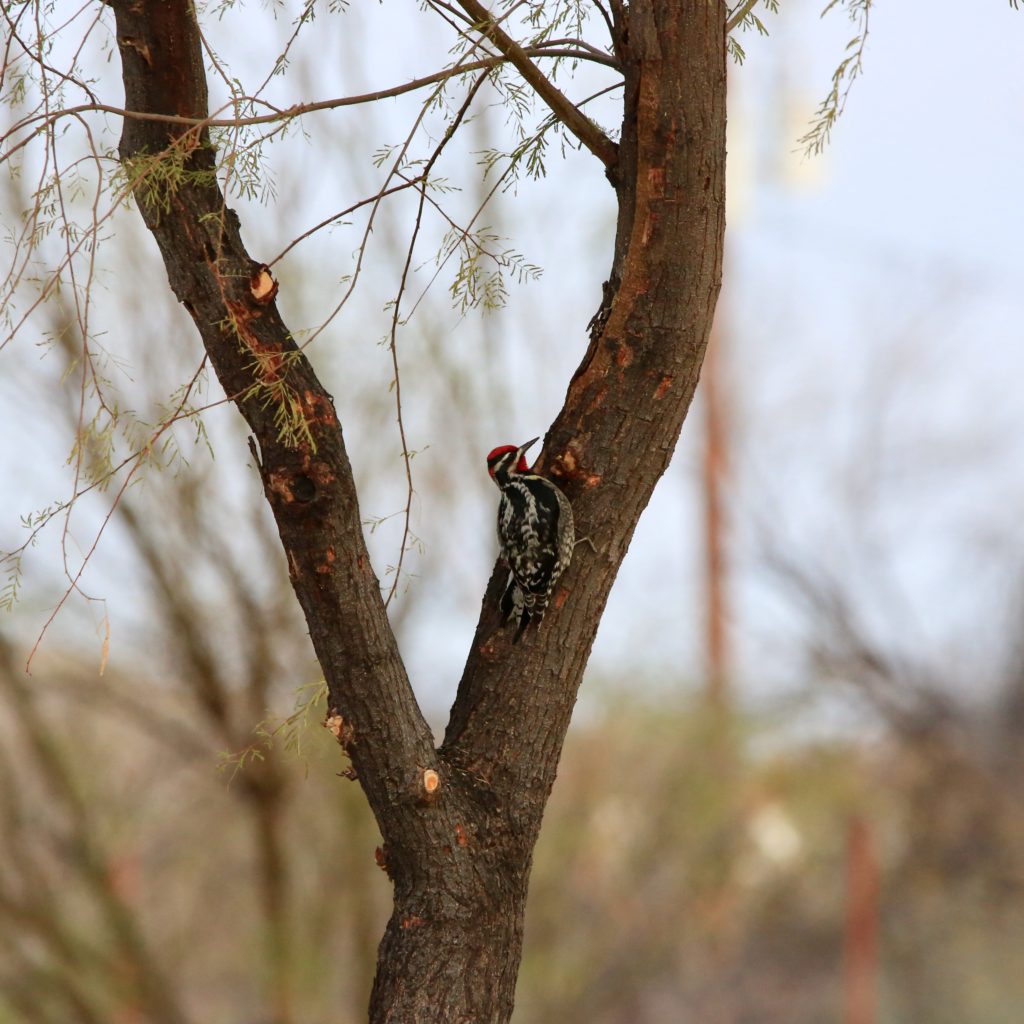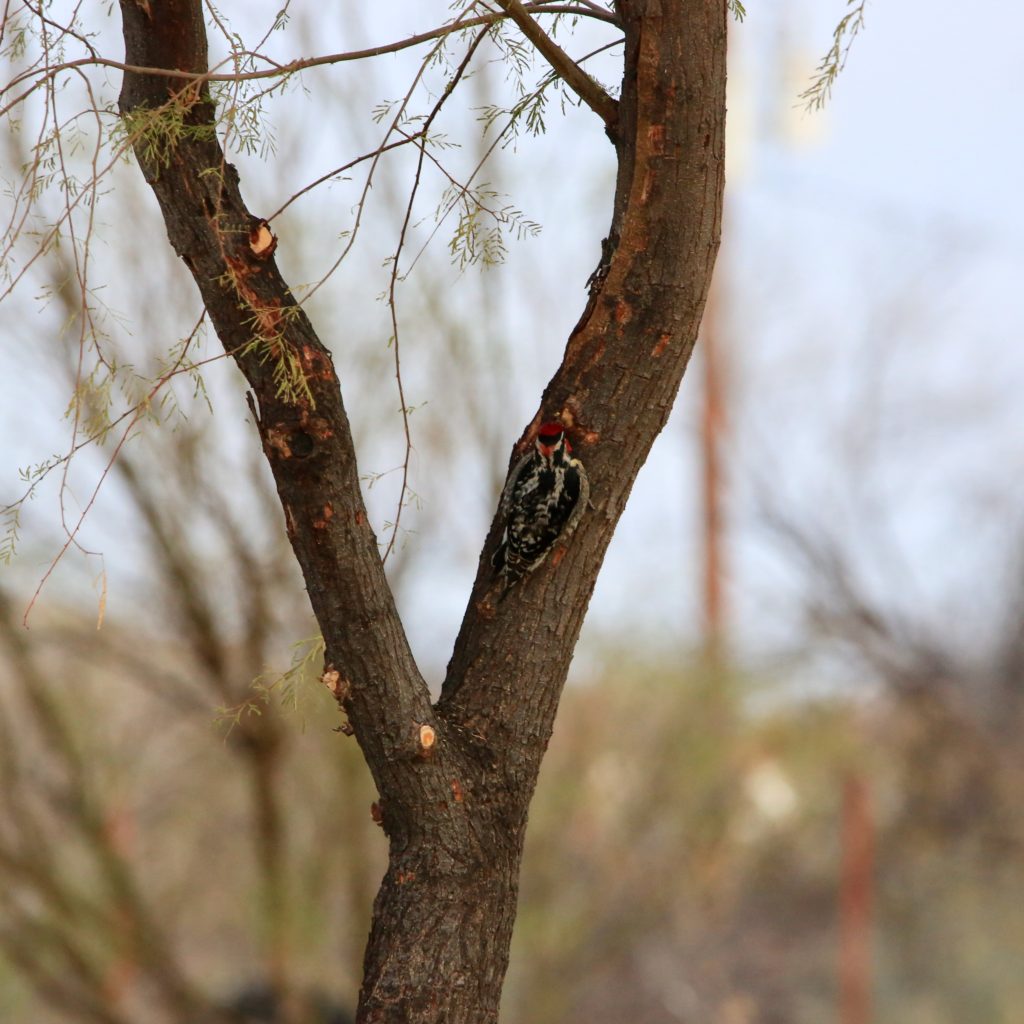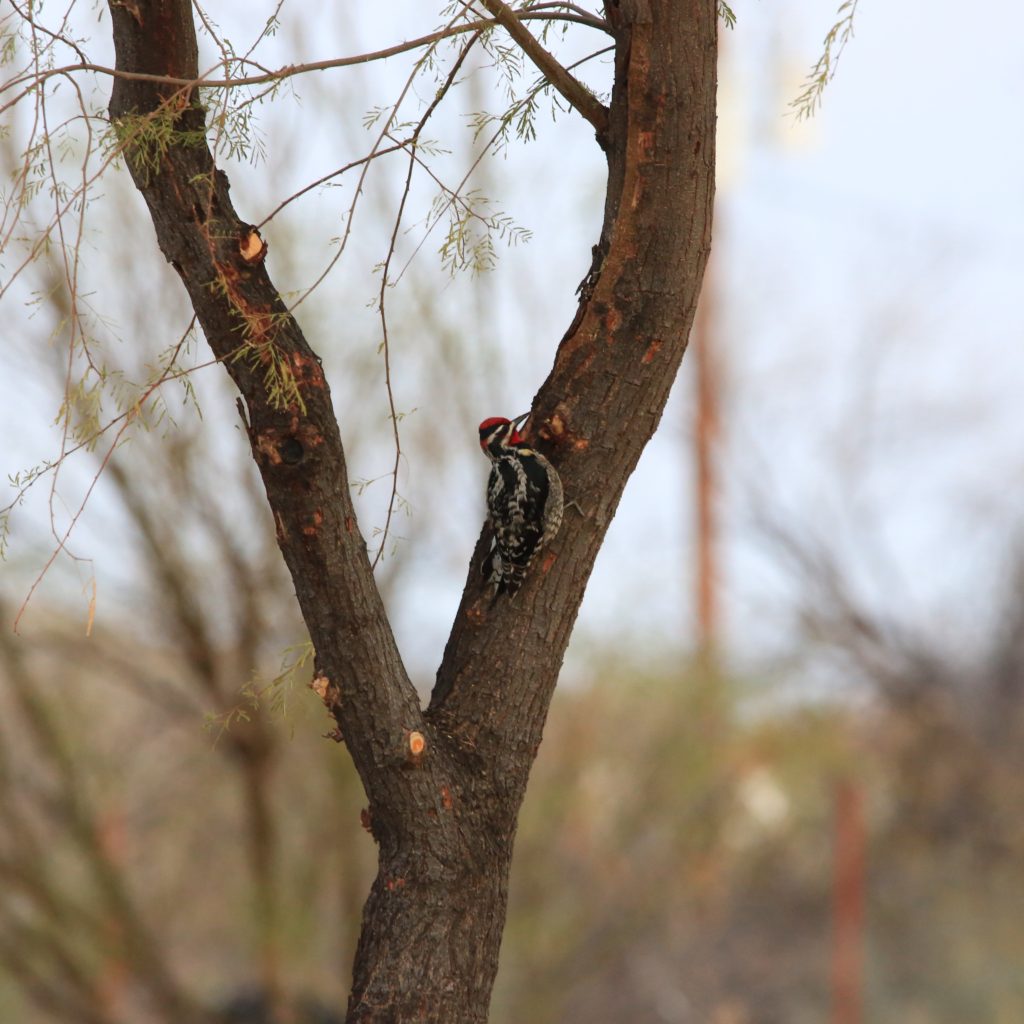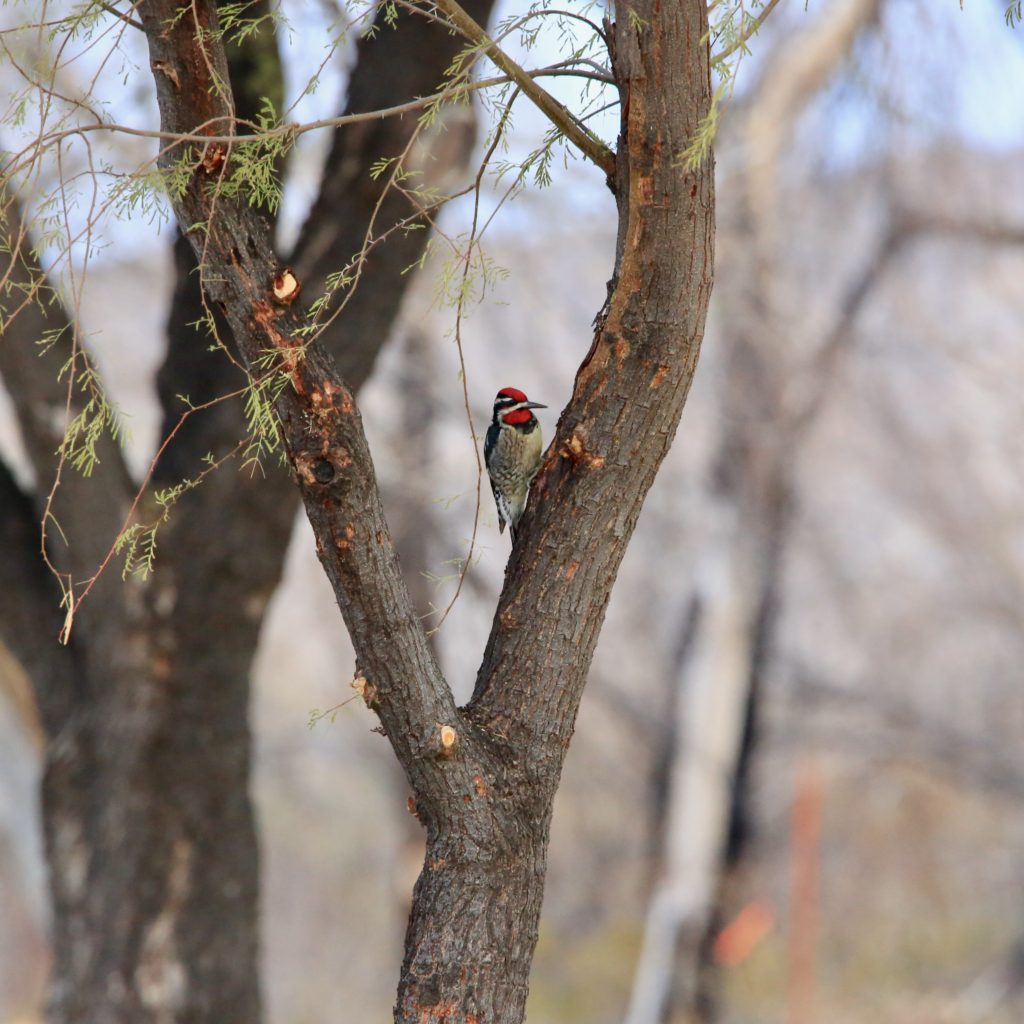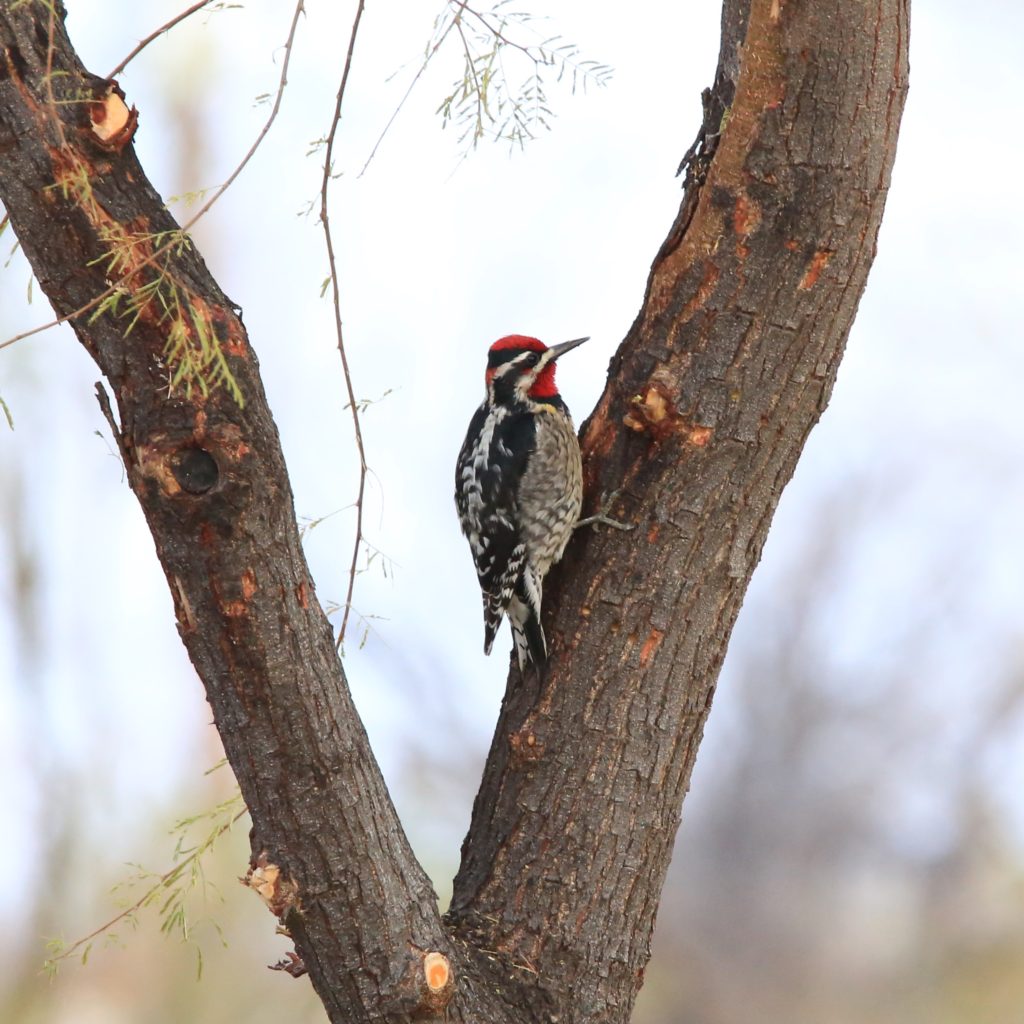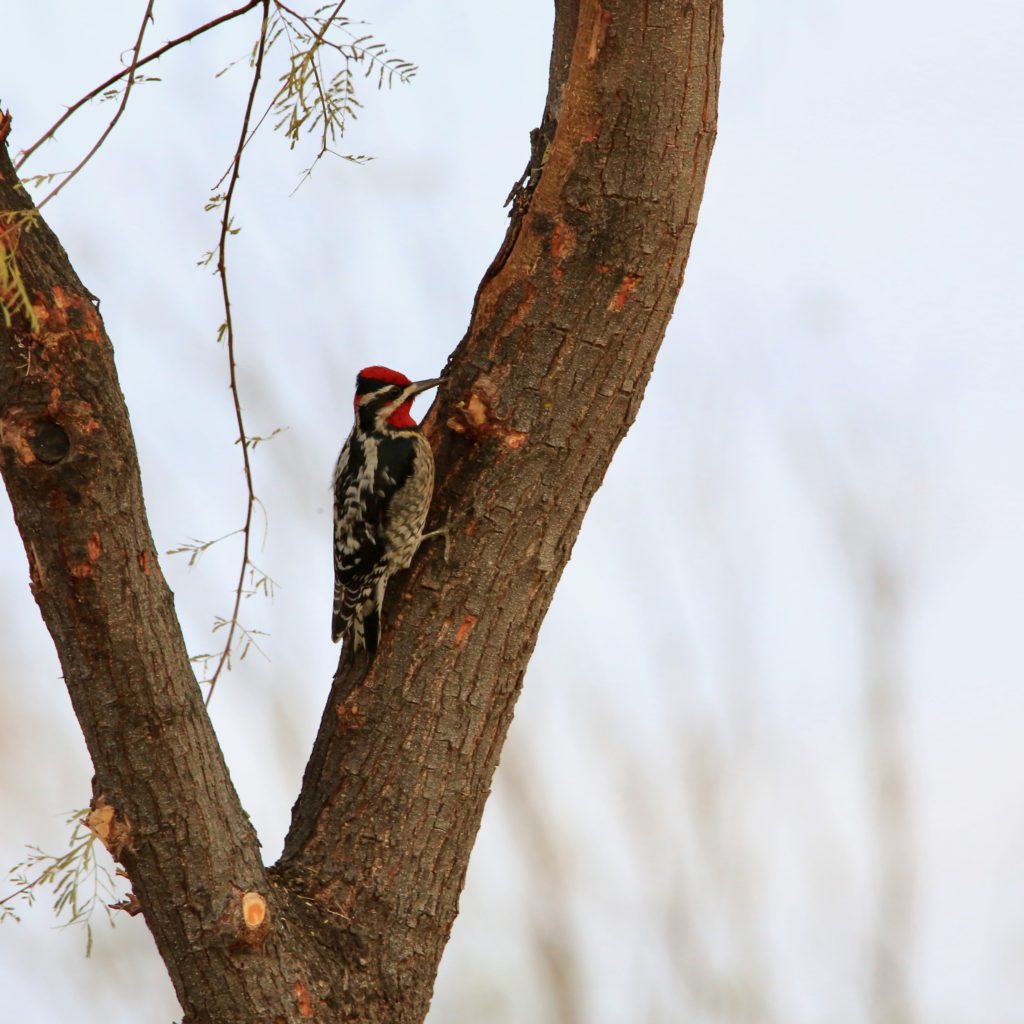
Red-naped Sapsucker
A Red-naped Sapsucker is a fun bird to see while bird watching. Below are some tips to help you identify Red-naped Sapsuckers. We have also put together a list of fun Red-naped Sapsucker t-shirts, Red-naped Sapsucker bird patches, birdhouses, bird feeders, binoculars, stickers, and other fun bird watching items.
About Red-naped Sapsuckers
The Red-naped sapsuckers live in the mixed forests on the Pacific coast of North America. These birds migrate south for the winter. Those that make habitats on the coast are often non-migratory even through winter.
Description and Identification
Red-naped Sapsuckers are medium-sized woodpeckers that are 7.5-8.3 inches in length and weigh about 1.1-2.3 oz. These brightly-colored birds have red napes, red foreheads, a black spot on their breasts, and black bands on their backsides. Their backs are black, rumps white, and their underparts are tinged yellow. Males have completely red throats, while the throats of the females are red at the bottom, and the rest of the neck is powdered black. Apart from a few differences in plumage coloration, females look almost the same as males. Juvenile Red-naped Sapsuckers have brownish plumage feathers. These birds are often confused with their relatives; Yellow-bellied sapsuckers. For a long period of time, these two species were considered to be the same due to the physical similarities between them, and due to the range overlap.
Red-naped Sapsucker Size
- Length: these birds have an average length of 7 to 9 inches.
- Weight: a fully matured Red-naped Sapsuckers weighs an average of 59 to 65 grams
- Wingspan: The Red-naped Sapsuckers have an average wingspan of 14 to 16 inches
Red-naped Sapsucker Appearance
These Red-naped Sapsuckers have a redhead and upper chest. The belly and rump have a white color. The plumage on the back is black in color and has a distinctive wing bar that has a large white wing patch
Red-naped Sapsucker Feeding
As they are woodpeckers, the primary part of the diet of Red-naped Sapsuckers is tree sap. These
birds also consume insects and fruits. Red-naped Sapsuckers make rectangular holes into the
inner bark of trees such as birches, alders, chokecherries, and willows. Unlike one might assume
from their name, these birds don’t actually suck sap from trees. Instead, these birds have
specialized stiff hairs on their tongues that cause sap to stick from it — then they lap it up into
their mouths. Other food sources for Red-naped Sapsuckers are flies, beetles, ants, and spiders.
They commonly eat flies that get stuck on trees because of the sap.
These sapsuckers drill holes in trees and eat the sap, as well as insects attracted to it. They may catch insects in flight. They also complement their diets with seeds and berries. These birds are not afraid of human interaction and visit birdfeeders for breadcrumbs.
Red-naped Sapsucker Habitat
Red-naped Sapsuckers generally breed in evergreen and deciduous forests in trees such as
aspens, birches, ponderosa pines, Douglas-firs, junipers, and willows. They usually reside in
elevations between 1,000-10,000 feet. These birds can also be observed breeding in yards, forest
edges, and gardens. Although these birds commonly use pine-oak and oak forests during winter,
they avoid them during the breeding season. Orchards and woodlands are also common wintering
grounds for these birds.
The Red-naped Sapsuckers live in the mixed forests found on the Pacific coast. It is not uncommon to find this bird species in parts of North America. They nest in a large cavity excavated in a deciduous tree, often choosing one weakened by disease. They may use the same area for several years if their living conditions are favorable.
Range and Migration
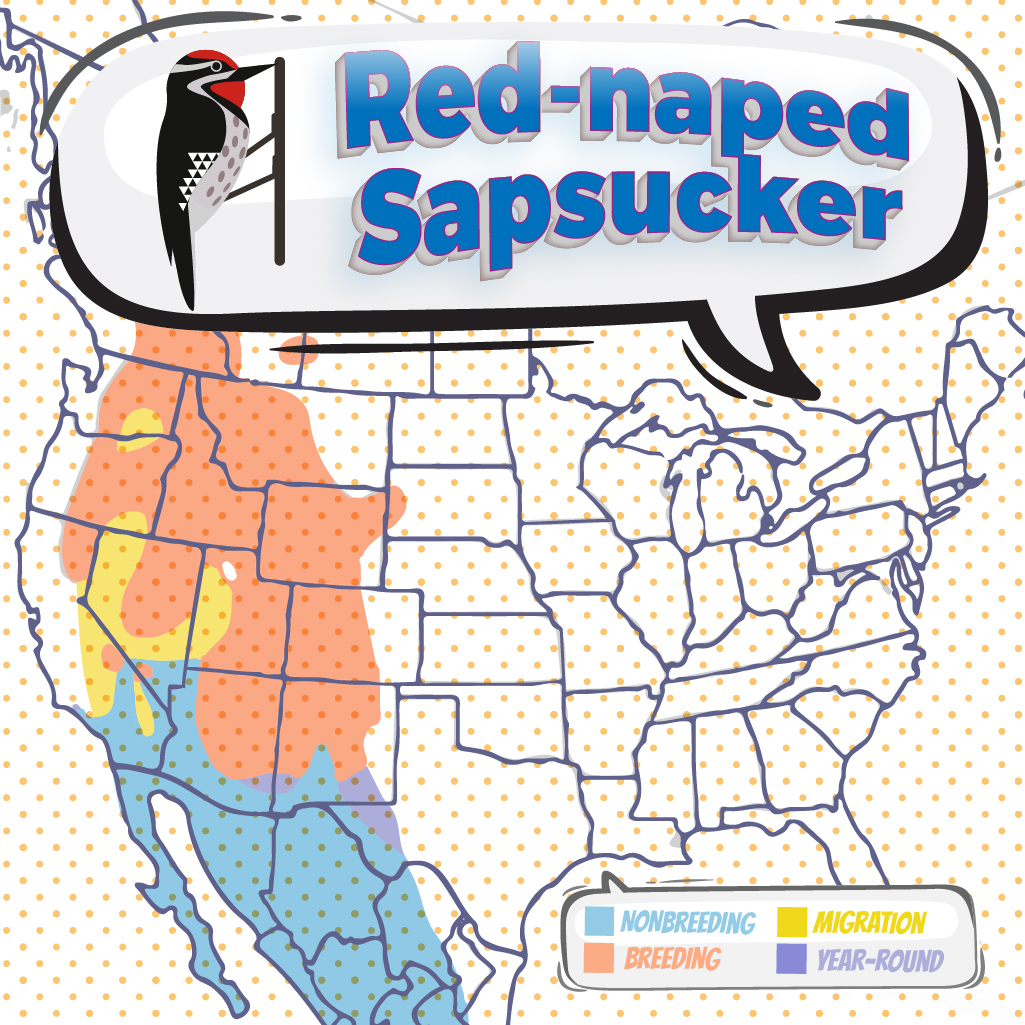
Red-naped Sapsuckers are medium-sized woodpeckers commonly found in North America. Many
populations of these birds reside in the Rocky Mountains and around the Great Basin region. Red-
naped suckers migrate short distances during winter. These birds reach their wintering grounds in
late August. They head back to their breeding ground by late Match or early April.
Red-naped Sapsucker Life and Behavior
During nesting season, the Red-naped Sapsuckers nest in tree cavities and interbreed with the closely related Red-naped Sapsucker or Yellow-bellied Sapsucker. It is not uncommon for pairs of this species to remain together for more than one nesting season. The nest is built by both sexes 6 meters from the ground in a standing dead tree. Their defense mechanism is usually to ignore any intrusion into their nest. The female lays an average of 4 to 6 white eggs each season. Both the male and female incubate the eggs for about two weeks. The young ones are looked after by both parents and leave the nest a month after hatching.
Red-naped Sapsucker Nesting
Red-naped Sapsuckers usually nest in holes they drill in trees. These trees could be alive or dead.
Aspens are the most commonly used trees by these birds, but they also nest in black cottonwoods,
paper birches, Douglas-firs, western larches, and ponderosa pines. Red-naped Sapsuckers usually
choose big trees that are infested with heartwood fungus, so that their excavating process
becomes simpler. These birds often reuse their old nests or build new nests in the same trees. In
some cases, they might also use pre-existing nest cavities. Nesting holes of these birds are often
at an elevation of 2-75 feet from the ground. Female Red-naped Sapsuckers lay 3-7 eggs, which
need to be incubated for about 8-12 days.
Ornithology
Bird Watching Academy & Camp Subscription Boxes
At Bird Watching Academy & Camp we help kids, youth, and adults get excited and involved in bird watching. We have several monthly subscription boxes that you can subscribe to. Our monthly subscription boxes help kids, youth, and adults learn about birds, bird watching, and bird conservation.
Bird Watching Binoculars for Identifying Red-naped Sapsuckers
The most common types of bird-watching binoculars for viewing Red-naped Sapsuckers are 8×21 binoculars and 10×42 binoculars. Bird Watching Academy & Camp sells really nice 8×21 binoculars and 10×42 binoculars. You can view and purchase them here.
Red-naped Sapsucker T-shirts
If you love the Red-naped Sapsucker you should purchase a Bird Watching Academy & Camp T-shirt. To help support bird conservation we donate 10 percent to bird conservation activities.
Red-naped Sapsucker Iron On Patches
Kids, Youth, and Adults love to collect our Bird Watching Academy & Camp iron-on patches. Our bird-watching patches help you keep track of the birds you have seen and identified. You can also display the patches on our Bird Watching Academy & Camp banners.
The Red-naped Sapsucker is a great iron-on patch to start your collection with. The patches are durable and can be sewn on or ironed on to just about anything.
Red-naped Sapsucker Stickers
Stickers are a great way for you to display your love for bird watching and the Red-naped Sapsucker. We sell a monthly subscription sticker pack. The sticker packs have 12 bird stickers. These sticker packs will help your kids learn new birds every month.
Bird Feeders for Red-naped Sapsuckers
There are many types of bird feeders. Here are our favorite bird feeders for your backyard. We use all of these bird feeders currently. Kids will have a great time watching birds eat at these bird feeders. Using this collection of bird feeders will provide a wide variety and many types of birds.
Best Bird Houses for Red-naped Sapsuckers
There are many types of birdhouses. Building a birdhouse is always fun but can be frustrating. These 4 birdhouses have become our favorites. Getting a birdhouse for kids to watch birds grow is always fun. We spent a little extra money on these birdhouses but they have been worth the higher price and look great.


